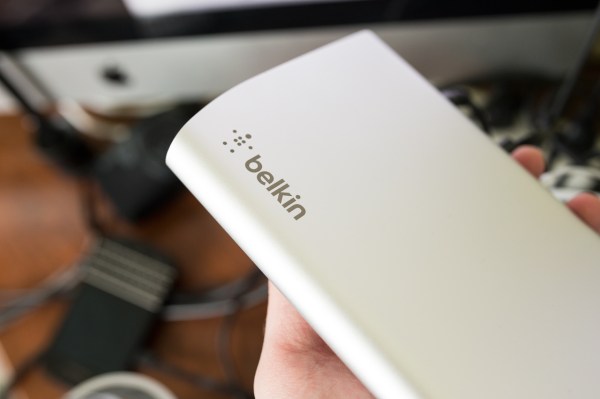Thunderbolt, you were a tech with near unlimited promise when first introduced, but what have you done with all that power? Since my first Thunderbolt-equipped Mac, I’ve essentially been using the ports as straight up Mini DisplayPort replacements, and using them exclusively for powering external screens. But now the Belkin Thunderbolt Express Dock has arrived, and Thunderbolt finally makes sense. Pricey, $300 sense, mind you.
- 2 Thunderbolt ports, with daisy-chain capabilities to connect up to 5 additional Thunderbolt devices.
- Gigabit Ethernet port
- 3 USB 3.0 ports
- 1 FireWire 800 port
- 3.5mm headphone output and mic in ports
The Belkin Thunderbolt dock’s design is understated, and will fit with the rest of your black and aluminum standard Mac kit. It’s basically just a box with rounded edges, a cable management channel running through the middle underside of the device, and a row of ports at the back, but it works and it can tuck nicely under your MacBook if you’re using a desktop stand, or underneath the screen of your iMac. There’s even a pair of flashing indicators for network traffic on the Ethernet port, which makes me nostalgic for the days of desktop PC towers that told you everything you needed to know with just a series of blinking lights.
[gallery columns="4" link="file" ids="811523,811524,811525,811526"]
If anything it’s a little bulky, but considering everything it’s bringing to the table, that’s not really all that surprising. Note that this also requires an AC adapter to work, so you’ll have to clear up space on your office power bar.
Computer makers don’t tend to be looking for more ways to fit extra ports in their hardware designs, and the Retina MacBook Pro and MacBook Air lines are perfect examples of where things are headed. As a result, I find myself with only two USB ports on an $1,800 computer, no Ethernet port, a single input for both mic and headphones, and no Firewire 800 for my legacy devices, like portable hard drives. The Belkin Thunderbolt Express Dock fixes all those things.
The three USB 3.0 ports are possibly the best part of the arrangement, as they more than double to total load-out of USB ports on your average lightning-equipped MacBook Pro. Even with an iMac, you get 7 USB ports total instead of just three, turning it into a dream machine for someone like a video, design or audio professional who probably has tons of accessories they need to connect and/or switch out at any given time. The first time you don’t have to decide which crucial USB accessory to unplug in order to charge your iPhone, the Dock proves its worth.
The Thunderbolt daisy-chaining also means I can still attach my 27-inch iMac as an external monitor, though that means the chain ends there. But if I had a Thunderbolt drive with two ports, I can easily slot that in between the two, and still use the display as the terminal end of the chain. Finally, the return of Firewire 800 and the Ethernet provide some much-needed tools for using more old-school, but still very effective technologies, including the various Firewire 800 external drives I have sitting around.
All of these ports and additional bits worked flawlessly in my experience, and the headphone jack actually seems to operate as an external sound card to some degree, boosting volume levels and giving you more flexibility in terms of playback options.
If you ever feel like your Mac doesn’t have enough hardware input/output options, then the Belkin Thunderbolt Express Dock is for you. It took long enough to get here, and it’s pretty expensive at $299 (plus the price of Thunderbolt cable, which ships separately). The Matrox DS1 is another option at $249, but it only has one Thunderbolt port and just one USB 3.0, though it adds both an HDMI and DVI-D output. For my money, the Belkin is the way to go, especially if you use your Mac as your main workstation.




